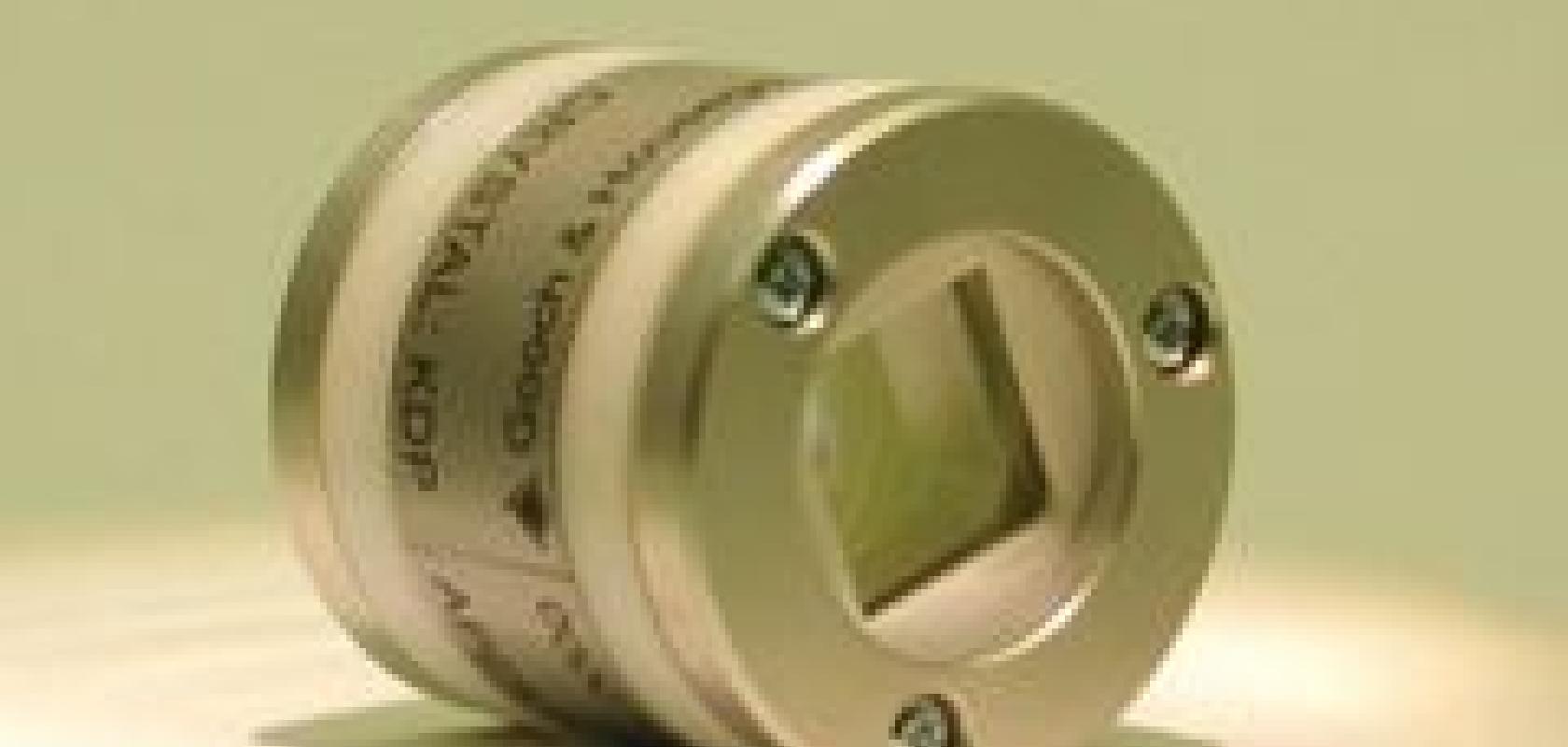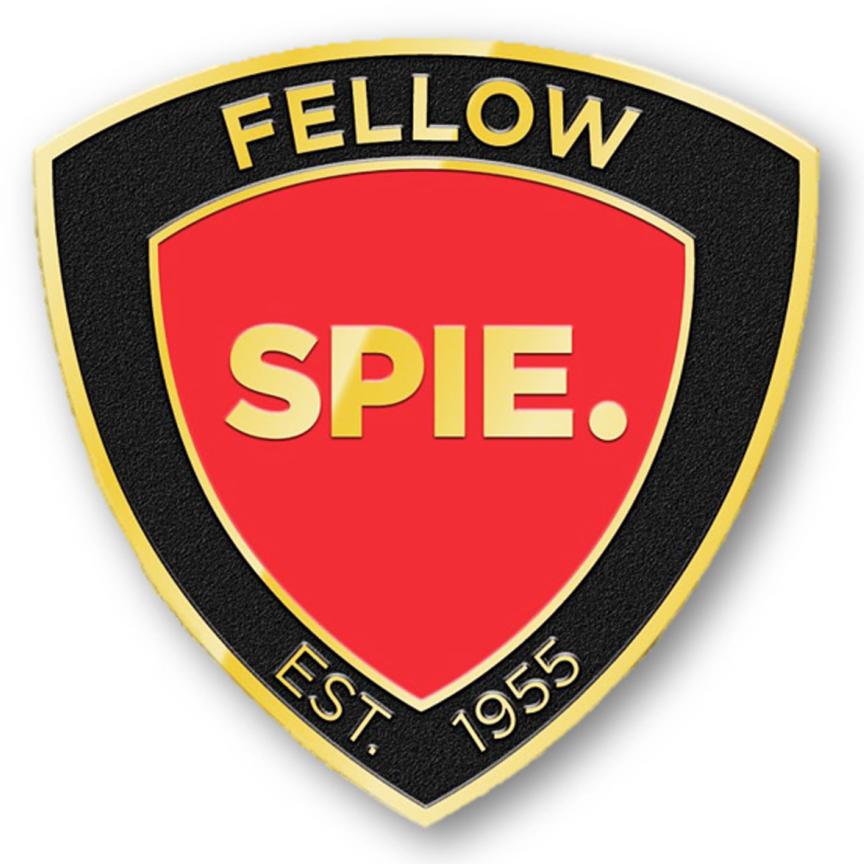Laser light is generally monochromatic with the wavelength dependent on the active material. Nd:YAG lasers, for instance, typically emit at 1,064nm, the wavelength neodymium produces when excited with a flash lamp or alternative pumping light. This is all very well if 1,064nm has the desired effect, and for many applications this is the case. However, there are many instances where shifting from 1,064nm to shorter or longer wavelengths is beneficial and this is where nonlinear optics come into play. As Dominic Loiacono, general manager of Coherent’s Advanced Crystal Group (ACG), explains: ‘Lasers operate at a single frequency. Nonlinear materials are used to tune that [single] wavelength to more useful wavelengths.’
Tuning Nd:YAG lasers to longer wavelengths in the eye-safe region of 1.3-1.5μm through optical parametric oscillation (coherent Nd:YAG laser light at 1,064nm is damaging to the human eye) is used in laser range finders, for example. Higher frequencies or shorter wavelengths can also be produced in so-called second harmonic generation (SHG); 1,064nm can be halved to 532nm. This can be reduced further in third harmonic (355nm) or even fourth harmonic generations (266nm). Microelectronics and biological studies involving fluorescence make use of shorter wavelengths.
Nonlinear optics are made from birefringent materials, i.e. materials that have variations in refractive index, which results in the decomposition of a ray of light into two rays; the ordinary ray and the extraordinary ray. Most nonlinear optics are crystals, although some glasses exhibit nonlinear behaviour, as do many organic materials. ‘Potassium titanyl phosphate (KTP) is a classic nonlinear material that’s been in use for more than 40 years,’ comments Loiacono. ‘It can be used to tune the laser line to longer or shorter wavelengths, depending on how it is cut.’ Military and range finding applications predominantly use KTP crystals. KTP is also used to shorten the wavelength into the green portion (532nm) of the spectrum – it is used in flow cytometry equipment, tattoo removal, the green source of RGB in laser displays, or green laser pointers.
Coherent’s Advanced Crystal Group grows large aperture, long KTP crystals with a high optical quality suitable for the OPOs used in range finders. All these materials must have high laser damage thresholds, especially for range finders operating over long distances and therefore requiring high laser power.
Trade offs
Moving away from the original source wavelength involves power losses; second harmonic generations typically have around 80 per cent power conversion, according to Loiacono, while third harmonic generation (355nm) will have 25 to 30 per cent conversion efficiencies. The same thing applies for moving to longer wavelengths.
‘The further away from the original source wavelength the greater the power losses, which is why higher power lasers are required and why the optics have to withstand higher laser fluencies,’ Loiacono says. Typically, increasing the nonlinear efficiency is achieved by increasing the laser power and focusing to smaller spot sizes. Coherent’s nonlinear crystals can typically withstand up to 10 to 20GW/cm2 fluence levels.
Different types of crystal will have differing nonlinear coefficients. Frank Stallone, sales engineer at crystal optics producer Deltronic Crystal, explains that for SHG, both signals will be emitted – 1,064nm and 532nm. However, the more nonlinear the crystal is the more second harmonic (532nm) will be emitted. ‘There are other parameters to consider, and it’s always a compromise,’ he adds. For instance, some crystals such as lithium niobate damage more easily in the visible wavelength. Therefore, even though lithium niobate has a higher nonlinear coefficient than lithium tantalate, lithium tantalate might be the best choice for systems working in the visible range.
Periodic poling
Although optically polished nonlinear materials by themselves can produce second harmonics, the highest efficiencies are achieved at strict crystallographic angles and temperatures. One of the ways to improve on this is through a technique called periodic poling. Deltronic Crystal produces periodically-poled lithium niobate and tantalate, which has improved nonlinear performance and ease of use. Gooch and Housego also manufactures periodically-poled lithium niobate, which, when employing optical parametric oscillation, can provide a range of output wavelengths in the infrared using a single 1,064nm pump laser.
Periodic poling improves the nonlinear properties of a crystal through an effect called quasi-phase matching (QPM). Light of one wavelength passing through a birefringent crystal has different velocities depending upon the orientation of the light relative to the crystallographic axes. Phase matching in birefringent optical materials enhances the efficiency of the nonlinear conversion process by taking advantage of the occasion when an ordinary ray of one wavelength travels at the same velocity as the extraordinary ray of another wavelength. This serves to lengthen the interaction distance. Ideally, the interaction distance would be unlimited, but in reality the ‘coherence length’ extends over a finite distance, and sometimes this distance is very short.
Quasi-phase-matching (QPM) is a scheme that increases the interaction distance, producing very high conversion efficiencies where a negligible output would otherwise result. ‘With quasi-phase-matched materials the polarisation is reversed every coherence length using periodic poling, so that one wavelength, for example the fundamental wavelength, falls behind the generated wavelength and then, in the next segment of material, the behaviour is reversed,’ explains Philip Marlowe, product manager, nonlinear optics at Gooch and Housego.
This oscillation in position occurs as the light passes through potentially hundreds of alternately polarised layers in the material. In this way, very high energy conversion efficiencies are achieved with very low light intensities – perhaps greater than 70 per cent conversion, according to Marlowe, whereas, by comparison, single crystals may produce virtually no output.
These poled layers can have periods on the order of 5 to 30μm with the distance determined by the material properties, the input wavelength, the required output wavelength(s), and the temperature of operation. Periodically-poled devices can have ‘stripes’ of different period lengths, which produce specific output wavelengths at specific temperatures for a given pump laser wavelength. These outputs can be adjusted using temperature control, which offers the opportunity for continuous tuning over a broad wavelength range.
The development of periodically-poled lithium niobate (PPLN) in the 1990s led to a resurgence in the development surrounding optical parametric oscillators (OPOs), according to Frank Mueller, product manager EOM/cw-OPO at Qioptiq, a manufacturer of photonic products, including OPOs (for more on OPOs, see Stephen Mounsey’s article in the June/July issue of Electro Optics). An OPO uses a three-wave mixing process, meaning there are three waves with different wavelengths intermingling and which dephase in respect to one another while propagating inside a medium. ‘Without phase matching, the net gain for the generated waves would be very small – the power would oscillate back and forth between the waves on their way through the crystal,’ explains Mueller. ‘Quasi-phase matching using periodically poled nonlinear optics, however, results in an effective net gain of power for the generated waves.’
In its OPOs, Qioptiq uses nonlinear material containing many different periods of poling, which allows the OPO to be tuned within a wide wavelength range – its standard OPO devices, OS4500 and OS4600, are tuneable within 1.4 to 2.0μm for signal photons and 2.3 to 4.7μm for idler photons using a pump wavelength of 1,064nm. A typical application for OPOs is molecular spectroscopy, whereby scientists want to scan over a wide wavelength range to measure absorption structures.

Gooch and Housego manufactures nonlinear crystals, including periodically-poled lithium niobate.
The first CW-OPO was demonstrated in the 1960s. This was followed by a relatively quiet period of development activity until the introduction of PPLN in the 1990s. The first commercial CW-OPO (OS4000, Linos) appeared on the market in 2000. ‘Standard PPLN shows a strong photorefractive effect, a light-induced charge transport inside the material, especially if there is green light involved, which there invariably is when working with 1,064nm through SHG,’ explains Mueller. ‘This effect results in an unreliable operation of OPOs and, up until the last decade, the only way to overcome this was to heat the crystal to above 150°C. This introduces the problem of keeping a high temperature of the crystal stable for narrow line emissions.’
The problem surrounding photorefractivity was overcome with the development of magnesium oxide (MgO) doped PPLN, which came onto the market around five years ago. ‘The first OPO systems based on standard PPLN were simply not that reliable,’ says Mueller. ‘With MgO doped PPLN, the OPO can be run for the lifetime of the laser.’
Marlowe comments there are reasons for doping the material, which include both crystal performance and processing: ‘Doping can increase the damage resistance of PPLN and it also improves the processing, because the doped material can be poled at lower voltages.’ Lithium niobate requires an electric field of about 20kV/mm to successfully produce a periodically poled pattern, while the doped material only needs a field strength several times smaller.
For OPO developers like Qioptiq (previously Linos), Mueller comments that there have been two milestones on the crystal side for commercialising OPO systems: First, the development of periodically-poled lithium niobate and, a few years later, the development of MgO doped PPLN. ‘In the past, the crystals to be used in OPOs had to be carefully selected. Nowadays, with the new material, nearly 100 per cent of the crystals are of a usable quality and we can build reliable systems up to 4.7μm,’ he says.
The next step is to find materials that are suitable for use at even longer wavelengths. There are candidates that can be used further into the infrared (>5,000nm) Mueller says but, typically, they cannot be periodically poled or have a very low damage threshold.
Future uses
According to Stallone at Deltronic Crystal, one of the future uses of nonlinear optics is in laser TVs, which can use a laser working at one wavelength, and a nonlinear crystal such as PPSLT to generate the red, green and blue wavelengths required. ‘The crystals generate these wavelengths now, but they are still fairly expensive to make in current market quantities,’ he says.
Another future use for iron doped lithium niobate crystals is the development of holographic storage media. Potentially, extremely large amounts of information could be stored in a small nonlinear crystal. ‘Doping lithium niobate with iron, which usually has a detrimental effect in optics, means the material can now “remember” the image or data written with light,’ explains Stallone. ‘A laser can write billions of times in different layers within the crystal, one layer after another. There are so many different sites that one crystal would be a huge memory bank for sophisticated optical computers.’
Some organic materials have high nonlinear coefficients. ‘Single crystal vanilla has the largest known nonlinear coefficient,’ comments Loiacono of Coherent’s Advanced Crystal Group. ‘However, the material itself is hygroscopic and has a very low damage threshold.’ Loiacono says that some organic materials have very high nonlinear coefficients and are exciting for low power applications, but the materials generally need to be protected from the atmosphere and degrade if exposed to moisture.
Currently, Coherent is concentrating on high-power applications. ‘It’s a wavelength and power race,’ states Loiacono, in reference to certain applications, such as microelectronics production. As the size of transistors become smaller in microelectronics, shorter and shorter wavelengths are required – microelectronics processing uses 266nm and even 193nm in photolithography. ‘Moving to shorter wavelengths places greater requirements on the optics. In addition, manufacturers need higher throughputs and therefore higher laser powers. The combination of shorter wavelengths and higher power is pushing nonlinear materials to their intrinsic capabilities.’


